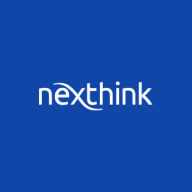

Nexthink and Splunk Observability Cloud are competitors in the IT monitoring and observability category. Nexthink appears to have the upper hand in offering user-centric analytics and experience scoring, while Splunk stands out with strong dashboard capabilities and cloud integration.
Features: Nexthink provides proactive user-centric analytics, experience scoring, and automation features that improve end-user management by reducing manual tasks. Splunk Observability Cloud excels in advanced dashboard functionalities, real-time insights across platforms, and seamless integration in multi-cloud environments.
Room for Improvement: Nexthink can improve by enhancing IoT support, simplifying cloud integration, and increasing non-Windows platform compatibility. Splunk Observability Cloud could simplify its pricing, improve Azure support, and enhance its documentation and AI capabilities. Both platforms would benefit from more training resources and easier configuration for users.
Ease of Deployment and Customer Service: Nexthink is deployable on both cloud and on-premises, offering flexibility and well-regarded customer support. Splunk supports hybrid and multi-cloud deployments, providing a notable advantage in diverse infrastructures. While generally positive, Splunk's support could improve in response time and documentation quality.
Pricing and ROI: Nexthink is seen as cost-efficient with a competitive pricing model, particularly favorable for larger enterprises through reduced support incidents. Splunk, despite being viewed as expensive, justifies its cost with a comprehensive feature set that supports performance insights and operational efficiencies, which many find valuable even with budget constraints.
| Product | Market Share (%) |
|---|---|
| Nexthink | 22.8% |
| Splunk Observability Cloud | 3.4% |
| Other | 73.8% |


| Company Size | Count |
|---|---|
| Small Business | 3 |
| Midsize Enterprise | 2 |
| Large Enterprise | 19 |
| Company Size | Count |
|---|---|
| Small Business | 20 |
| Midsize Enterprise | 10 |
| Large Enterprise | 43 |
Nexthink is a software solution company that focuses on helping IT workplaces by providing revolutionary insights into employees’ daily technology experiences. Nexthink offers IT departments a unique combination of automation, real-time analytics, and employee feedback. In order for IT departments to tell how employees use their services and how those services influence their productivity, Nexthink delivers a Digital Employee Experience Management platform. IT teams can now proactively measure and manage the digital employee experience.
Nexthink is closing the widening and costly visibility gap by freeing up IT teams to advance from reactive problem-solving to proactive optimization. By providing real-time visibility into the technology that employees use, the support process is streamlined through powerful automation capabilities, which will lead to improved employee engagement, no matter where they work.
About the Nexthink Experience
Nexthink aims to eliminate the barriers to a better digital experience by accelerating innovation across all endpoints. How does Nexthink work?\
Reviews from Real Users
Nexthink is a leading solution in digital employee experience management software because it gives valuable advice and actionable steps into employees’ daily experiences.
A tech specialist at a tech services company writes, "The initial setup is very simple."
A second-level support team leader at a consultancy agency notes, "The solution’s visualizations are very good. It's very easy to use them... We can give our senior managers, our directors, and our partners a dashboard at a very high level. They can very easily start to drill down by clicking through the dashboard and find stuff that doesn't look right. And our technical teams can use the same thing to identify problems in specific locations."
Splunk Observability Cloud offers sophisticated log searching, data integration, and customizable dashboards. With rapid deployment and ease of use, this cloud service enhances monitoring capabilities across IT infrastructures for comprehensive end-to-end visibility.
Focused on enhancing performance management and security, Splunk Observability Cloud supports environments through its data visualization and analysis tools. Users appreciate its robust application performance monitoring and troubleshooting insights. However, improvements in integrations, interface customization, scalability, and automation are needed. Users find value in its capabilities for infrastructure and network monitoring, as well as log analytics, albeit cost considerations and better documentation are desired. Enhancements in real-time monitoring and network protection are also noted as areas for development.
What are the key features?In industries, Splunk Observability Cloud is implemented for security management by analyzing logs from detection systems, offering real-time alerts and troubleshooting for cloud-native applications. It is leveraged for machine data analysis, improving infrastructure visibility and supporting network and application performance management efforts.
We monitor all Digital Experience Monitoring (DEM) reviews to prevent fraudulent reviews and keep review quality high. We do not post reviews by company employees or direct competitors. We validate each review for authenticity via cross-reference with LinkedIn, and personal follow-up with the reviewer when necessary.